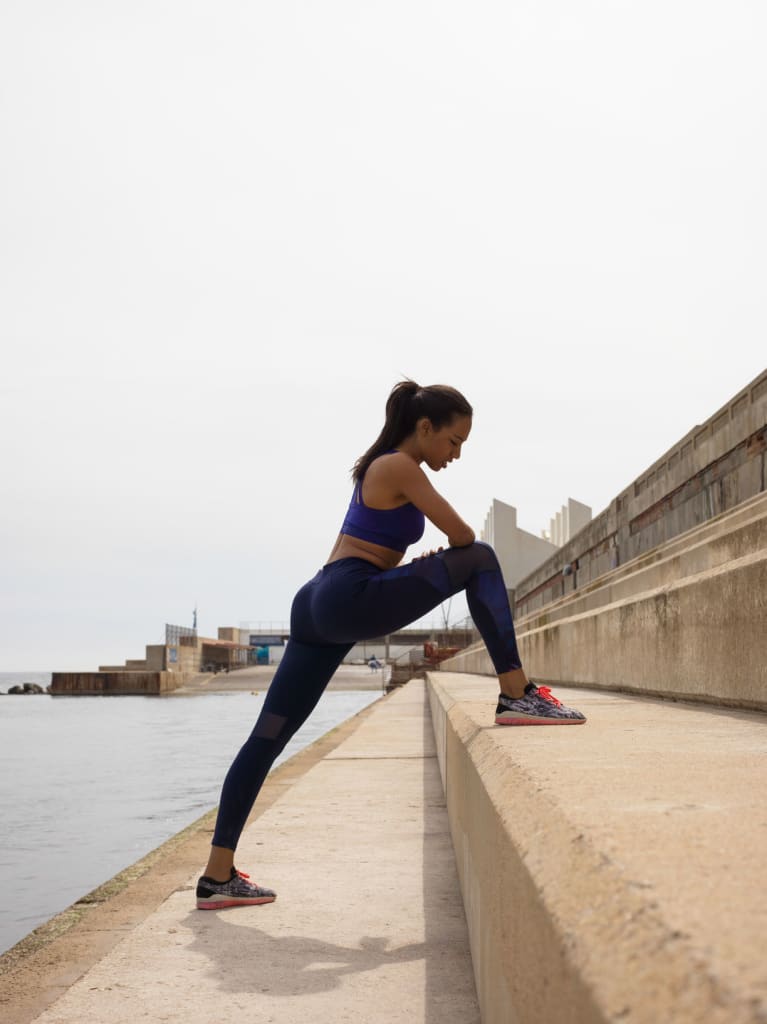
Our editors have independently chosen the products listed on this page. If you purchase something mentioned in this article, we may earn a small commission.
It’s probably safe to say that the most neglected aspect of your fitness routine is stretching. So many people skip this step at the beginning of their workout, and once they’ve finished their session quickly pack up without a cool down (myself included).
Reality check: Skipping the stretch is doing your body a major disservice. Taking just a few minutes to stretch can help promote flexibility, improve range of motion, and even minimize the risk of injury. You’ve probably heard it time and time again, but really, we should all be stretching daily. Here’s why:
Beyond showing off your toe-touching abilities in your fitness class, there are a range of positives that come from stretching regularly. “The reason for stretching is to help create flexibility in muscle tissue,” explains NASM-certified personal trainer Jason Williams. “The benefit of stretching is to improve coordination, prevent injury, improve balance, improve recovery time, and release stress.”
Better mobility and range of motion can also come from stretching, which will trickle down into your other forms of exercise. For example, it will become easier to squat more deeply (and effectively), run with less hip discomfort, and even practice pilates or yoga with more ease. Remember, both your muscles and your joints thrive when you make stretching a consistent priority.
What happens when you stop stretching.
If you skimp out on this, frankly, essential step of your exercise routine, your body may pay the price down the line. “If someone has limited mobility and they are compensating through other parts of the body to achieve a motion (i.e. using low back extension to compensate for limited hip extension), they could injure themselves,” explains physical therapist Sarah Kostyukovsky, P.T., DPT, OCS.
It’s easy to brush this off, but your body needs the flexibility that comes from stretching in order to actually feel good while you’re working out. Plus, if you get injured, it’s likely your rehab will include…you guessed it, more stretching.
When is the best time to stretch?
probiotic+
Say goodbye to bloating, and hello to a lighter you.*

While there’s really no “best” time to stretch, you do reap different benefits from lengthening your muscles at different times of the day. “Dynamic stretching is great before an activity,” explains Kostyukovsky, adding that static stretching is ideal for when your muscles are already warmed up, like after your workout.
Think of dynamic stretching as ones that incorporate movement. Leg kicks with a toe touch, bodyweight squats, and arm swings are all great options to help support your mobility and range of motion.
As for static stretching, this is when you’ll be stationary (think: butterfly sit, quad stretch, etc.)
So you’re ready to start your journey to increased flexibility. But where to begin? Simply stretching for five minutes each day can make a world of difference, and working in the basics (toe touch, quad stretch, and single leg seated stretch) can help lengthen your muscles with ease over time.
If you can’t touch your toes right away, try bending your knees or working to get further to the ground with each passing day. It can also be useful to stretch with a yoga block handy or even a resistance band to loop around your feet or legs to deepen your stretches. It may be uncomfortable at first, but that means you’re on the road to progress.
“Use props to achieve an appropriate stretch without contorting your body,” suggests Kostyukovsky. “Props can include but are not limited to: yoga blocks, yoga strap, bolsters, a wall, and/or a counter.” Engaging in basic mobility exercises before working out is another great place to start, says Williams, but make sure to follow up your workout with static stretches to keep you feeling loose and limber as your muscles heal.
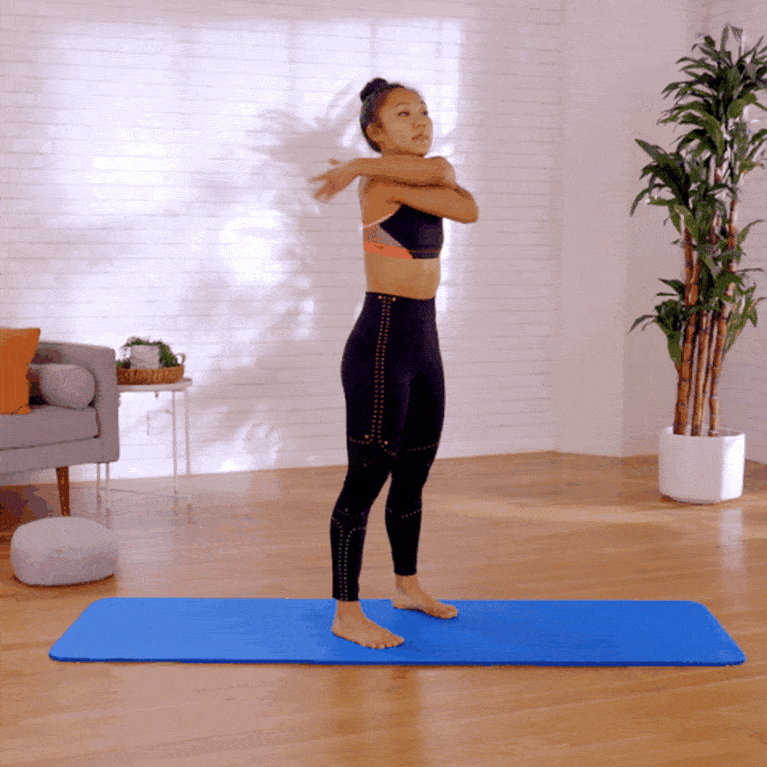
- Start in a standing position.
- Swing your arms in front of your body, then bring them backward behind your body.
- Continue swinging back and forth for 30 seconds.
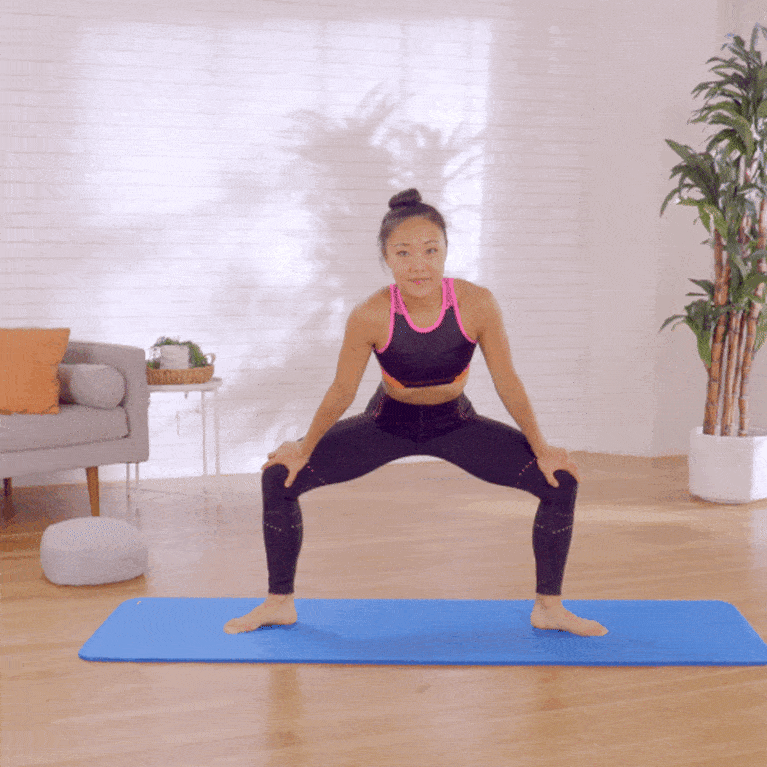
- Start standing with your legs apart, in a wide squat position. Place your hands on your thighs.
- Bend your knees slightly, then twist your body to one side, pressing your hands into your thighs to enhance the stretch. Switch and repeat on the opposite side.
- Slowly move back and forth for 30 seconds.
3. World’s greatest stretch
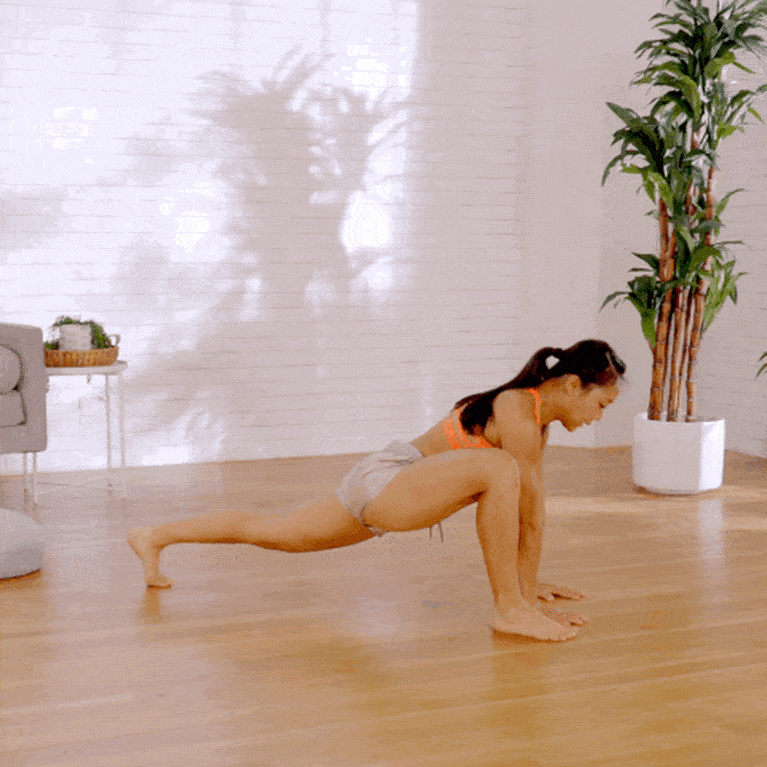
- From a high-plank position, step your right foot to the side of your left hand.
- Press your left hand into the ground and bring your right hand overhead. Twist your body to the right side, and bring your gaze to the lifted fingertips.
- Reverse the movement, and repeat on the opposite side.
- Continue for 30 seconds.
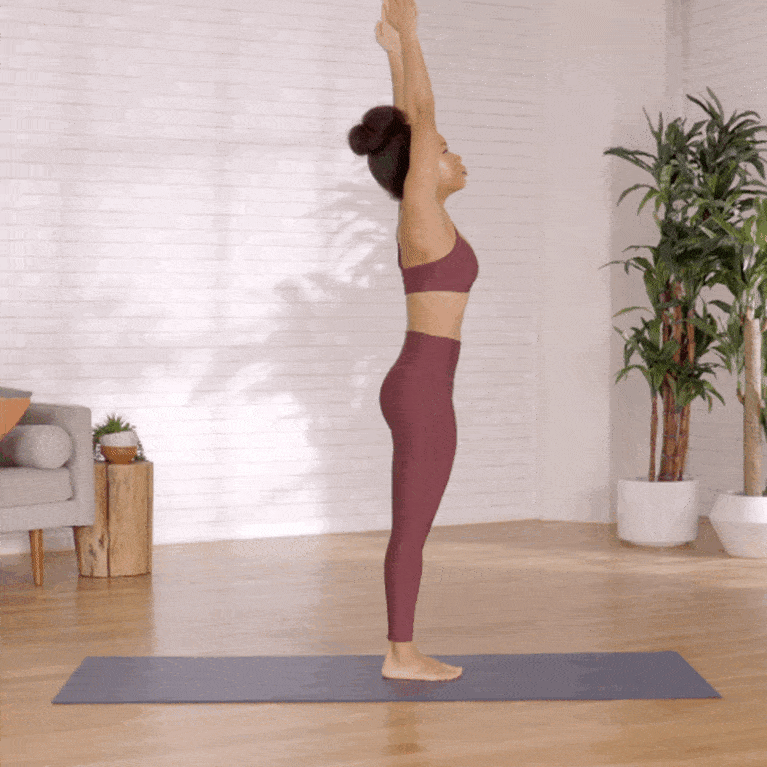
- Stand up tall with your arms reaching up to the sky.
- As you exhale, hinge at your hips, and fold your upper body forward, bending your knees if needed.
- Inhale, and come into a half lift. Then exhale and lower back down.
2. Seated One-Legged Forward Bend
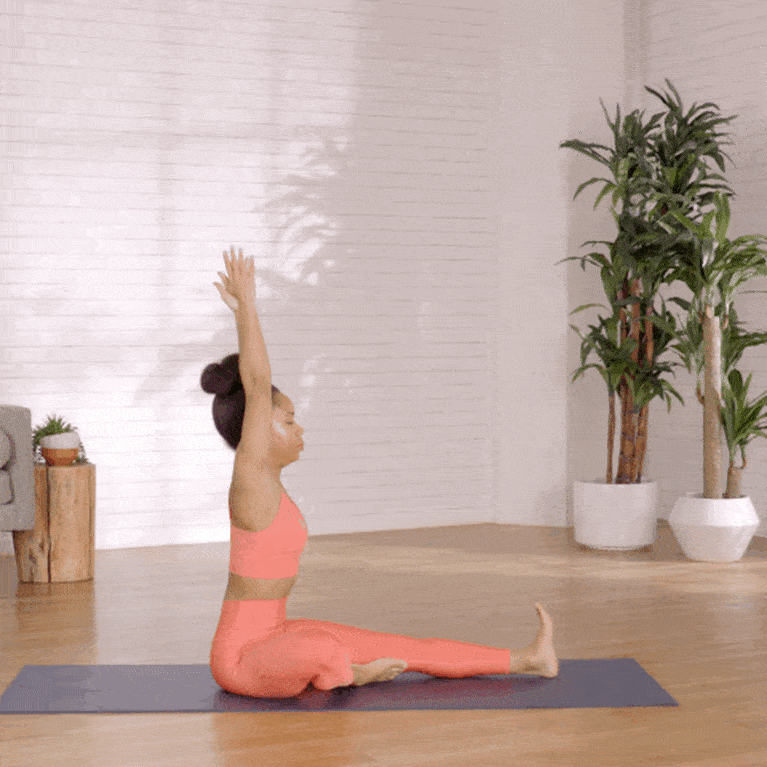
- Come to a seat on your mat. Extend your legs out in front of you.
- Bend your right knee, and bring the sole of your foot to your inner left thigh.
- Extend your arms up to the sky, then fold your torso over your legs.
- Hold for a couple of breaths, then switch legs, and repeat.
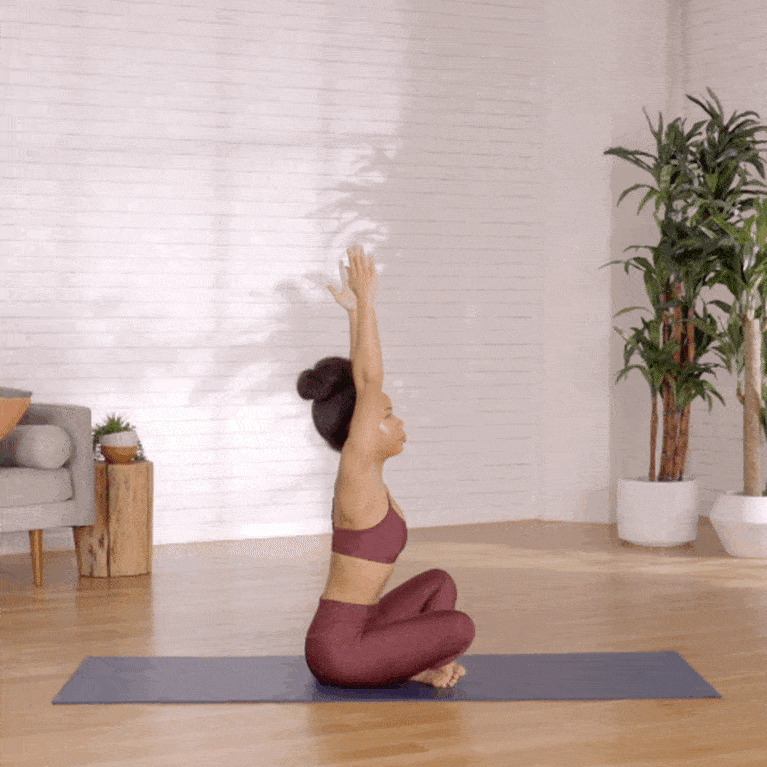
- Come down to sit on your mat, crossing your legs.
- Inhale your arms up to the sky. Take your right arm, place it on the mat behind you, and place your left hand on your left knee. Take a deep breath in.
- As you exhale, twist the body, gazing over your left shoulder.
- Hold for a couple of breaths, then come back to center. Repeat on the opposite side.
If keeping your body limber is integral to feeling your best throughout life. Stretching daily helps increase mobility, reduce risk of injury, and generally keep you feeling great before, during, and after your workouts. It doesn’t have to take a significant amount of extra time or effort, but putting aside a mere 5 to 10 minutes each day can make all the difference in how your body feels. Besides, who doesn’t want to be able to touch their toes?
In need of a little fitness inspo to kick things off? Check out our roundup of juicy stretches to lengthen those muscles and begin a new healthy habit.
Reset Your Gut
Sign up for our FREE doctor-approved gut health guide featuring shopping lists, recipes, and tips
You are now subscribed
Be on the lookout for a welcome email in your inbox!
https://www.mindbodygreen.com/articles/heres-why-you-should-stretch-everyday-for-increased-mobility

